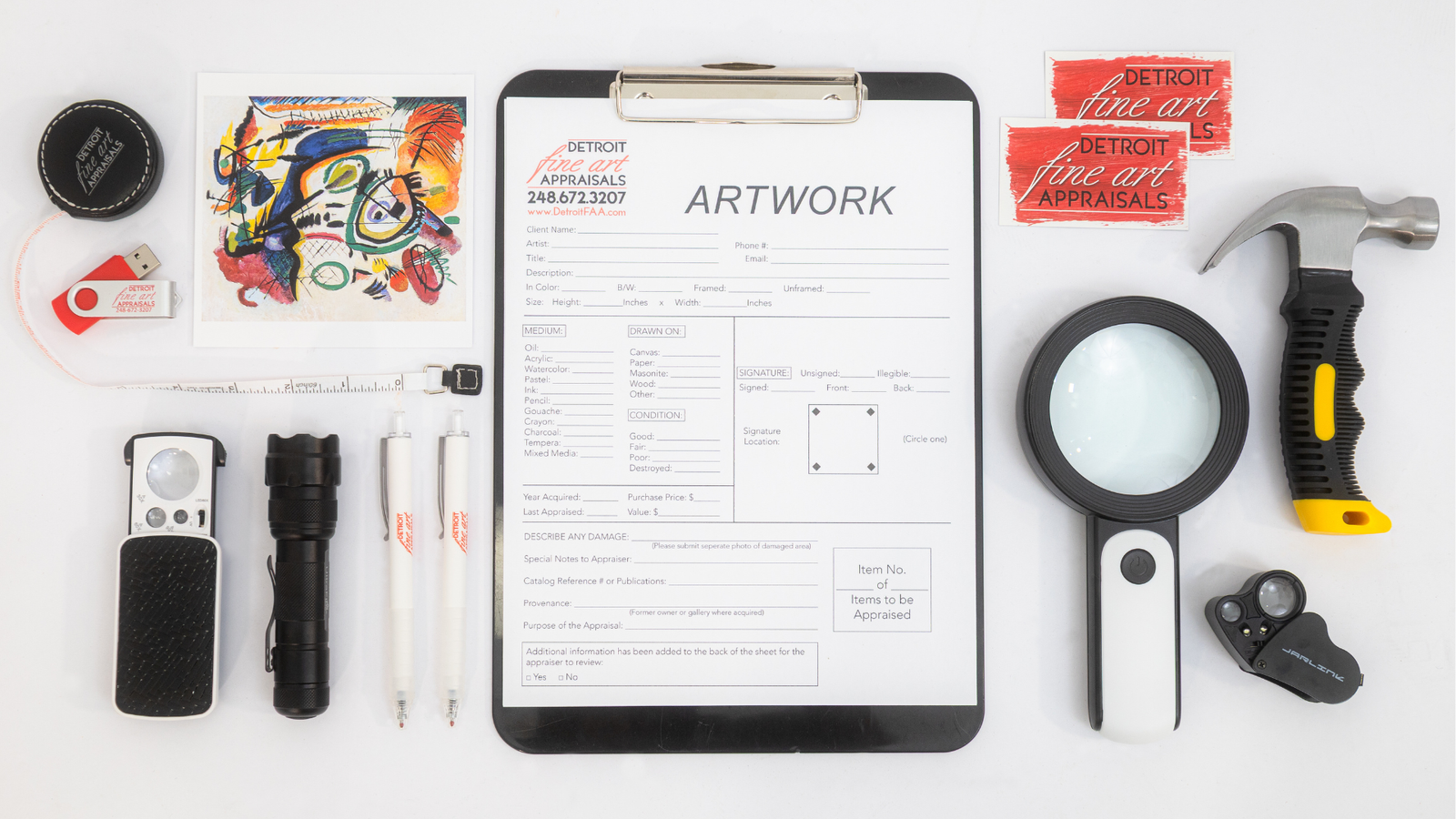If you’ve never had a piece of art appraised before, the process might feel a little mysterious. What exactly does an appraiser do? How do they determine value? And what should you expect from start to finish?
At its core, a professional art appraisal is about much more than assigning a dollar figure—it’s about providing a clear, well-documented, and defensible opinion of value that meets your specific needs. Here’s a look inside the process.
1. Understanding Your Goals
Every appraisal begins with a conversation. The appraiser will ask why you need the valuation, because the intended use determines the type of value reported:
- Replacement Value – for insurance purposes, reflecting what it would cost to replace the item with one of similar quality in the current market.
- Fair Market Value – for estate settlement, charitable donation, or legal purposes, reflecting the price a willing buyer and seller would agree upon.
This initial discussion also helps determine the scope of work, timeline, and any special considerations.
2. Examining the Artwork
If an onsite visit is scheduled, the appraiser will inspect each item carefully, documenting:
- Physical condition (including any damage or restoration)
- Dimensions and materials
- Signature or maker’s mark
- Subject matter and style
- Provenance (history of ownership) and related documentation
For some projects, remote appraisals are possible using high-quality photographs and supporting paperwork.
3. Conducting Market Research
Next, the appraiser researches comparable works in the current and historical market. This often includes:
- Auction records and dealer sales
- Gallery listings
- Private sales data
- Market trends for the artist or style
The goal is to identify relevant comparables that align with your piece in terms of medium, size, condition, and significance.
4. Determining the Value
Using the collected data, the appraiser applies appropriate valuation methodologies to arrive at an opinion of value. This step blends objective research with professional judgment informed by years of market experience.
5. Preparing the Appraisal Report
A professional appraisal isn’t just a verbal opinion—it’s a detailed written document that meets industry and legal standards. A typical report includes:
- Full description and photographs of each item
- Statement of the value and type of valuation (e.g., replacement cost, fair market value)
- Market data and comparables
- The appraiser’s qualifications and certifications
- A signed certification page confirming compliance with USPAP (Uniform Standards of Professional Appraisal Practice)
This report can be used for insurance claims, estate filings, charitable deductions, or personal records.
6. Delivering and Reviewing the Results
Once complete, the report is delivered—often within 10–14 business days, unless expedited service is arranged. A reputable appraiser will also be available to answer questions and explain the reasoning behind the valuation.
Why the Process Matters
A thorough, well-documented appraisal protects you in the event of a loss, supports legal and tax requirements, and provides peace of mind that your collection is understood and valued correctly.
At Detroit Fine Art Appraisals, we follow this process for every project—combining rigorous research, hands-on expertise, and a deep respect for the art and the stories behind it.
Considering an appraisal?
Contact us today to schedule your consultation and learn exactly what your artwork is worth.



